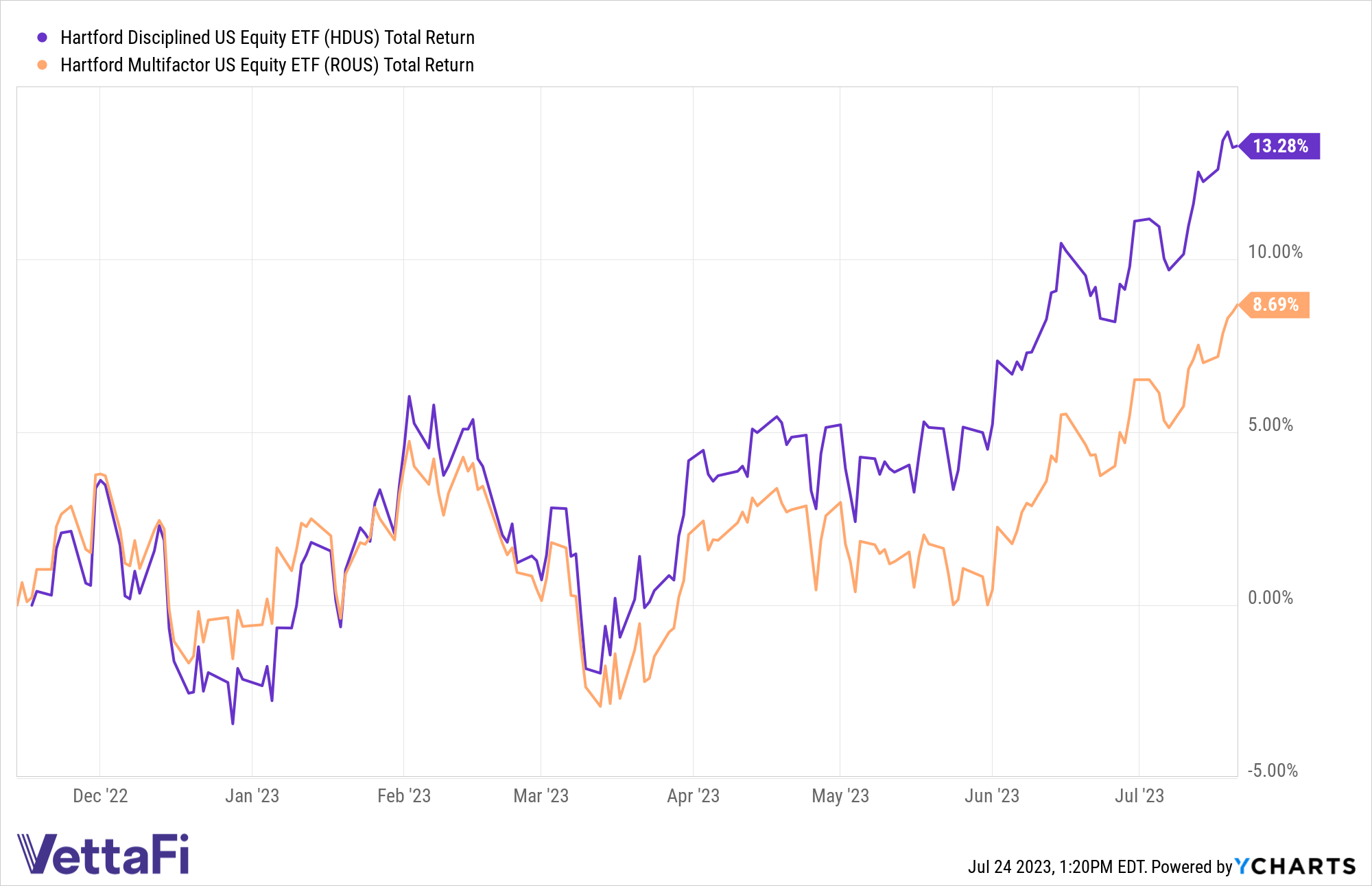On the surface, the Hartford Multifactor US Equity ETF (ROUS) and the Hartford Disciplined US Equity ETF (HDUS) may sound very similar.
While both funds provide exposure to the U.S. equity market, the funds have two unique use cases. Both ROUS and HDUS use factors to enhance returns. However, ROUS is positioned to be more defensive.
The larger of the two funds with $450 million in assets, ROUS is designed to provide exposure to the U.S. equity market with potentially less volatility than traditional cap-weighted indexes. The fund targets a 15% reduction in volatility over a complete market cycle.
See more: “ROUS Mitigates Concentration Risk, Offers Exposure Down the Cap Spectrum”
Meanwhile, HDUS is designed to provide core U.S. large-cap exposure by seeking balanced and consistent exposure across multiple risk factors. The fund also controls for active risk compared to a similar broad market capitalization-weighted index.
ROUS seeks to improve diversification relative to a cap-weighted benchmark by reducing concentration risk. The fund focuses on reducing concentration at the sector, market cap, and individual company levels. Conversely, HDUS seeks to provide relative diversification compared to the Russell 1000.
See more: “Cap-Weighted ETFs Can Introduce Unintended Risks to Portfolios”
Importantly, both funds use an integrated approach to multifactor investing, rather than an isolated or sleeve approach.
ROUS includes companies with a favorable combination of low valuation (50%), high momentum (30%), and high-quality (20%) investment factors. However, HDUS includes companies with a combination of low valuation, momentum, quality, and dividend yield factors.
ROUS and HDUS’ portfolios have a 50% overlap by weight, amounting to 193 overlapping holdings.
Comparing Returns

Looking only at returns, ROUS is underperforming HDUS due to its more defensive positioning. Over a one-year period, HDUS is up 13.3%, while ROUS is up 8.7%. In 2023, year-to-date, HDUS is up 15.8%, while ROUS is up 9.4%.
ROUS is an ideal fit for investors looking to reduce volatility and stay defensive. Many investors are currently holding cash on the sidelines, wary to get back in the market after turbulence. ROUS can serve as a solution, allowing investors to access equity markets with potentially fewer drawdowns than benchmarks.
For more news, information, and analysis, visit the Multifactor Channel.
Investing involves risk, including the possible loss of principal.
This article was prepared as part of Hartford Funds paid sponsorship with VettaFi. Hartford Funds is not affiliated with VettaFi and was not involved in drafting this article. The opinions and forecasts expressed are solely those of VettaFi. Information on this site should not be used or construed as an offer to sell, a solicitation of an offer to buy, a recommendation for any product or as investment advice.

